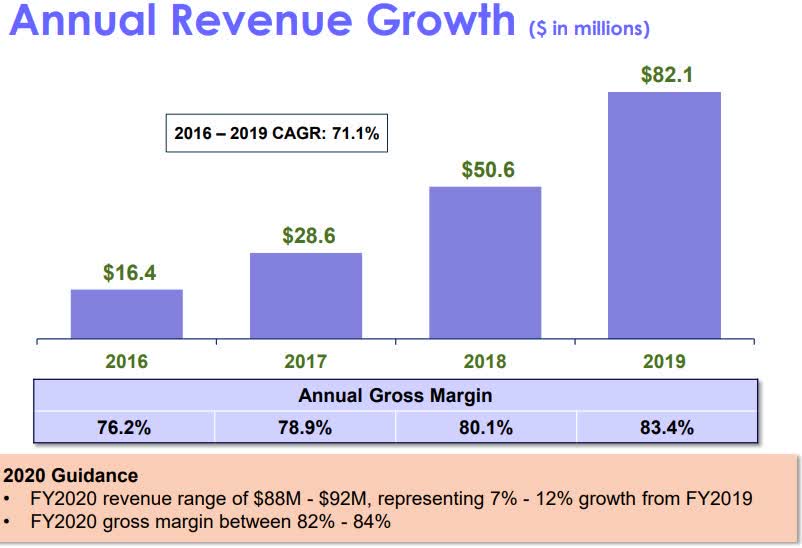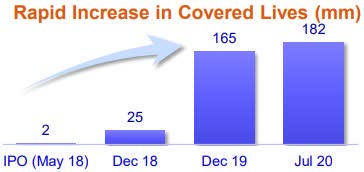OK, it looks like we’re finally going to be talking about a vaccine logistics issue that many people (including me) have been worried about. Specifically, how are these things going to be transported and stored? If you’re not in the biomedical field, that question might seem a bit boring and bring up mental pictures of 18-wheel trucks and forklifts of cartons, but remember, these vaccines generally aren’t dry powders. Some of them are infectious viruses themselves (the adenovirus vectors and others in that category), some of them are purified proteins (such as the Novavax candidate), and some of them are mRNAs that are packaged in very specific lipoprotein nanoparticles.
If that last category sounds like it might be the most fragile, well, you are correct-o-matic. There have been brief mentions of the stability of these candidates over the last few months, but now that things are getting very serious indeed, we’re starting to get a more detailed look at things. So let’s talk about the “cold chain”. That’s the distribution system for things (like most vaccines) that need to be kept refrigerated until they’re used in the clinic.
This document from the WHO will tell you a lot more than you ever wanted to know (or thought there even was to know) about the subject. Details get down to how large the packages are (the vials in the middle will feel the effects of refrigeration last, and then warm up the slowest), the design of refrigerated trucks and their airflow, the various options for “cold pack” devices inside containers, where things are placed in chilled storage units of various sizes and how they’re retrieved, how long things need to be kept out at room temperature in order to be used and how long they must
not be kept at room temperature before they have to be thrown away, and so on. There’s a lot of experience with this, and a lot of infrastructure.
But let’s qualify that last statement: there’s a lot of infrastructure in the developed world. Cold-chain distribution has always been a major challenge in places that are remote, less developed, or have generally higher ambient temperatures. You can probably think of plenty of locations that are all three of those at once. Ideally, you’d want something like a vaccine to be able to be distributed far and wide to all sorts of point-of-care locations, but in many instances people have to come to where the refrigeration is. Which is less desirable from a lot of angles.
And let’s qualify that earlier statement again: there’s a lot of infrastructure in the developed world for refrigerated cold-chain distribution. But what we’re looking at for the Moderna and Pfizer/BioNTech candidates, both of which are promising and are well into Phase II/III trials, is not just refrigeration. Moderna’s vaccine needs to be shipped and stored at -20 C (minus four Fahrenheit), while the Pfizer/BioNTech one needs to be at -70 C (-94 F). The former is enough of a challenge – freezer temperatures instead of refrigerator ones. But the latter. . .well, biology research labs all have freezers that go down that far (it’s where cell culture samples, oligonucleotide constructs, and recombinant proteins get stored), but you’re not going to find one down at the local pharmacy, which is perhaps where you were picturing lining up for a coronavirus shot.
This news sent both companies’ stock prices
down late last week, because it’s definitely not what people wanted to hear. Pfizer has provided
these details to the CDC about shipping and storage of their candidate: the vaccine can be shipped in “dry ice pack” boxes, but that dry ice will need to be replenished within 24 hours of receipt. The shipping carton needs to be closed within one minute of opening, and not opened more than twice per day. Vaccine vials, once removed, can be kept at refrigerator temperatures for up to 24 hours or at room temperature for no more than 2 hours after thawing. So this is going to take a very organized approach to make sure that the vaccine is handled properly without wastage. We’re looking at a lot of dry ice and a lot of orders for ultra-cold freezers if this is the candidate that gets heavy nationwide distribution. And mind you, I’m talking about organized distribution in Little Rock and Long Beach. What about La Paz and Lahore? What about Lubumbashi? Even back inside the US, what’s the nearest source of dry ice in Shiprock, New Mexico or Oceana, West Virginia?
A -70C storage regime looks like some type of centralized distribution for many areas; it just doesn’t seem practical for many point-of-care locations. It would be “thaw out a batch and get as many people through the door as you can before it goes bad”. Moderna’s candidate is surely easier to deal with, since we do at least have a lot more “standard freezer” type capacity both in distribution and local storage, but even that is going to require plenty of thought (and plenty of discipline on the receiving end). And
there’s talk that a Moderna Emergency Use Authorization might include the lower temperatures anyway. Let’s keep an eye on this story, and on the requirements for the other vaccines in testing. You would have to expect the recombinant-protein candidates (Novavax and others) to need less stringent storage conditions, but I don’t know about the adenovirus vector ones (and very much look forward to more details). This could be a big factor.
Update: see the comments for thoughts from some cold-chain specialists. Some are saying that this is more doable than it looks (given sufficient spending!), but the end-user problem remains. . .
40 comments on “Cold Chain (And Colder Chain) Distribution”
 Gary Cornell says: 31 August, 2020 at 1:14 pm I did a back of envelope calculation about what will be needed to distribute the Pfizer vaccine, which it seems requires the most refrigeration (-70c), that may interest you, It’s actually quite doable if we get started now at building out the infrastructure: https://garycornell.com/2020/08/30/back-of-envelope-calculation-the-number-and-the-costs-of-freezers-needed-for-the-pfizer-vaccine/
Gary Cornell says: 31 August, 2020 at 1:14 pm I did a back of envelope calculation about what will be needed to distribute the Pfizer vaccine, which it seems requires the most refrigeration (-70c), that may interest you, It’s actually quite doable if we get started now at building out the infrastructure: https://garycornell.com/2020/08/30/back-of-envelope-calculation-the-number-and-the-costs-of-freezers-needed-for-the-pfizer-vaccine/

